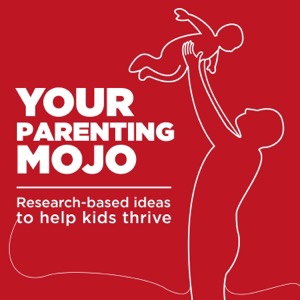006: Wait, is my toddler racist?
Your Parenting Mojo - Respectful, research-based parenting ideas to help kids thrive - En podcast av Jen Lumanlan

Kategorier:
This episode is part of a series on understanding the intersection of race, privilege, and parenting. Click here to view all the items in this series. I’d always assumed that if I didn’t mention race to my daughter, if it was just a non-issue, that she wouldn’t grow up to be racist. Boy, was I wrong about that. It turns out that our brains are wired to make generalizations about people, and race is a pretty obviously noticeable way of categorizing people. If your child is older than three, try tearing a few pictures of White people and a few more of Black people out of a magazine and ask him to group them any way he likes. Based on the research, I’d put money on him sorting the pictures by race. So what have we learned about reversing racism once it has already developed? How can we prevent our children from becoming racist in the first place? And where do they learn these things anyway? (Surprise: “We have met the enemy, and he is us.”) Jump to highlights 00:37 Introduction of episode 02:03 The premise of Vedantam's book The Hidden Brain 02:51 Brain processors that happened using unconscious awareness 05:05 What happens to people after being caught making racist comments 08:36 Colorblind approach socialization 15:00 The literature on attempts to reverse bias in children 23:07 Advice for parents about the episode References Aboud, F.E. (2003). The formation of in-group favoritism and out-group prejudice in children: Are they distinct attitudes? Developmental Psychology 39(1), 48-60. Bigler, R. (1999). The user of multicultural curricula and materials to counter racism in children. Journal of Social Issues 55(4), 687-705. Castelli, L., Zogmaister, C., & Tomelleri, S. (2009). The transmission of racial attitudes within the family. Developmental Psychology 45(2), 586-591. Faber, J. (2006). “Kramer” apologizes, says he’s not racist. CBS News. Retrieved from: http://www.cbsnews.com/news/kramer-apologizes-says-hes-not-racist/ Frontline (1985). A class divided. Available at: http://www.pbs.org/wgbh/frontline/film/class-divided/ Hebl, M.R., Foster, J.B., Mannix, L.M., & Fovidio, J.F. (2002). Formal and interpersonal discrimination: A field study of bias toward homosexual applicants. Personality and Social Psychology Bulletin 28(6), 815-825. Full article available at: https://www.researchgate.net/profile/Mikki_Hebl/publication/252443069_Formal_and_Interpersonal_Discrimination_A_Field_Study_of_Bias_Toward_Homosexual_Applicants/links/55a760f108ae410caa752c8c.pdf Hebl, M.R., & Mannix, L.M. (2003). The weight of obesity in evaluating others: A mere proximity effect. Personality and Social Psychology Bulletin 29(1), 28-38. Full article available at: https://www.researchgate.net/profile/Mikki_Hebl/publication/8436667_The_Weight_of_Obesity_in_Evaluating_Others_A_Mere_Proximity_Effect/links/55a760fb08aeb4e8e646e81f.pdf Hebl, M.R., & Xu, J. (2001). Weighing the care: Physicians’ reactions to the size of a patient. International Journal of Obesity 25, 1246-1252. Pahlke, E., Bigler, R.S., & Suizzo, M.A. (2012). Relations between colorblind socialization and children’s racial bias: Evidence from European American mothers and their preschool children. Child Development 83(4), 1164-1179. Full article available at:
